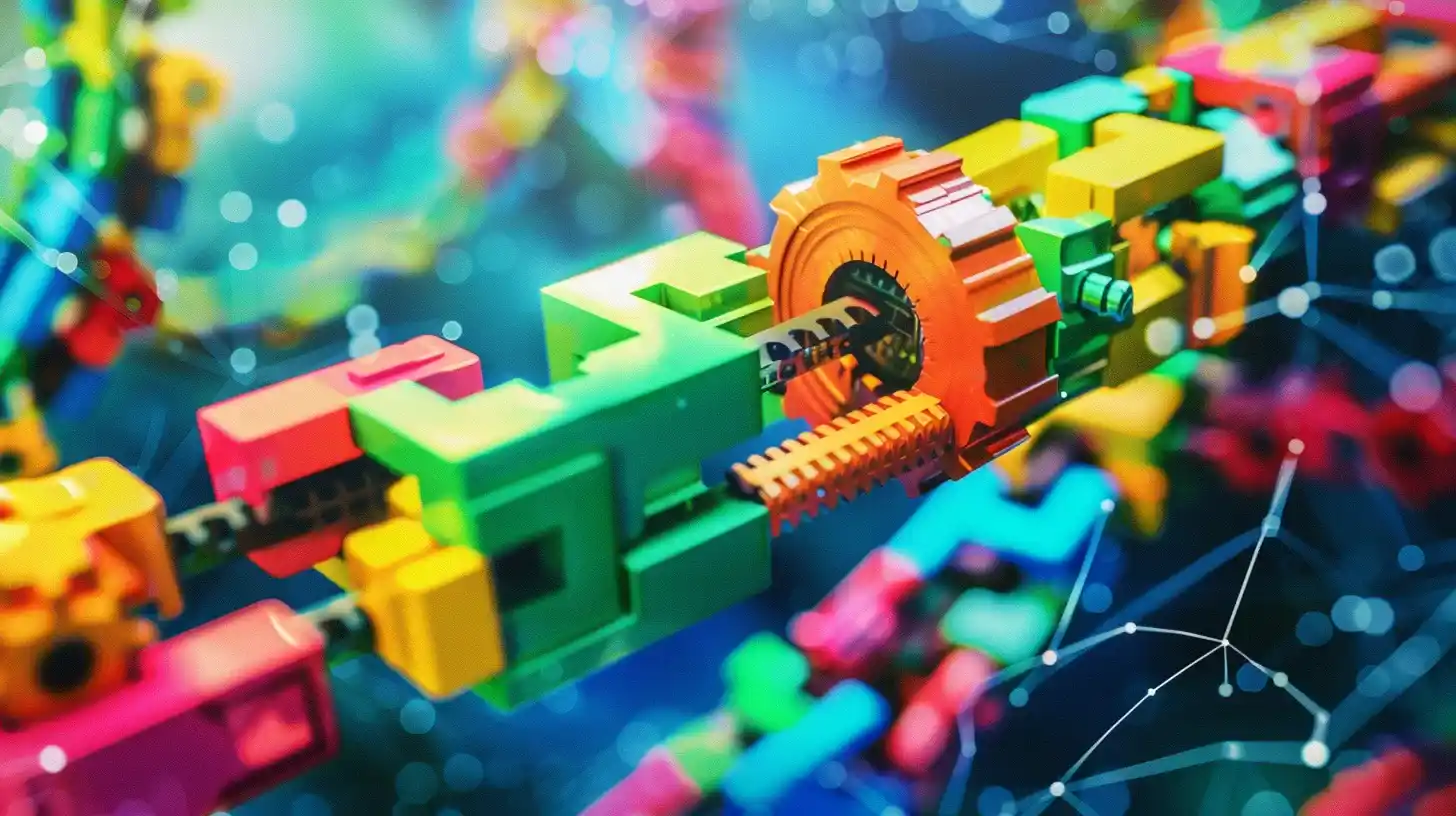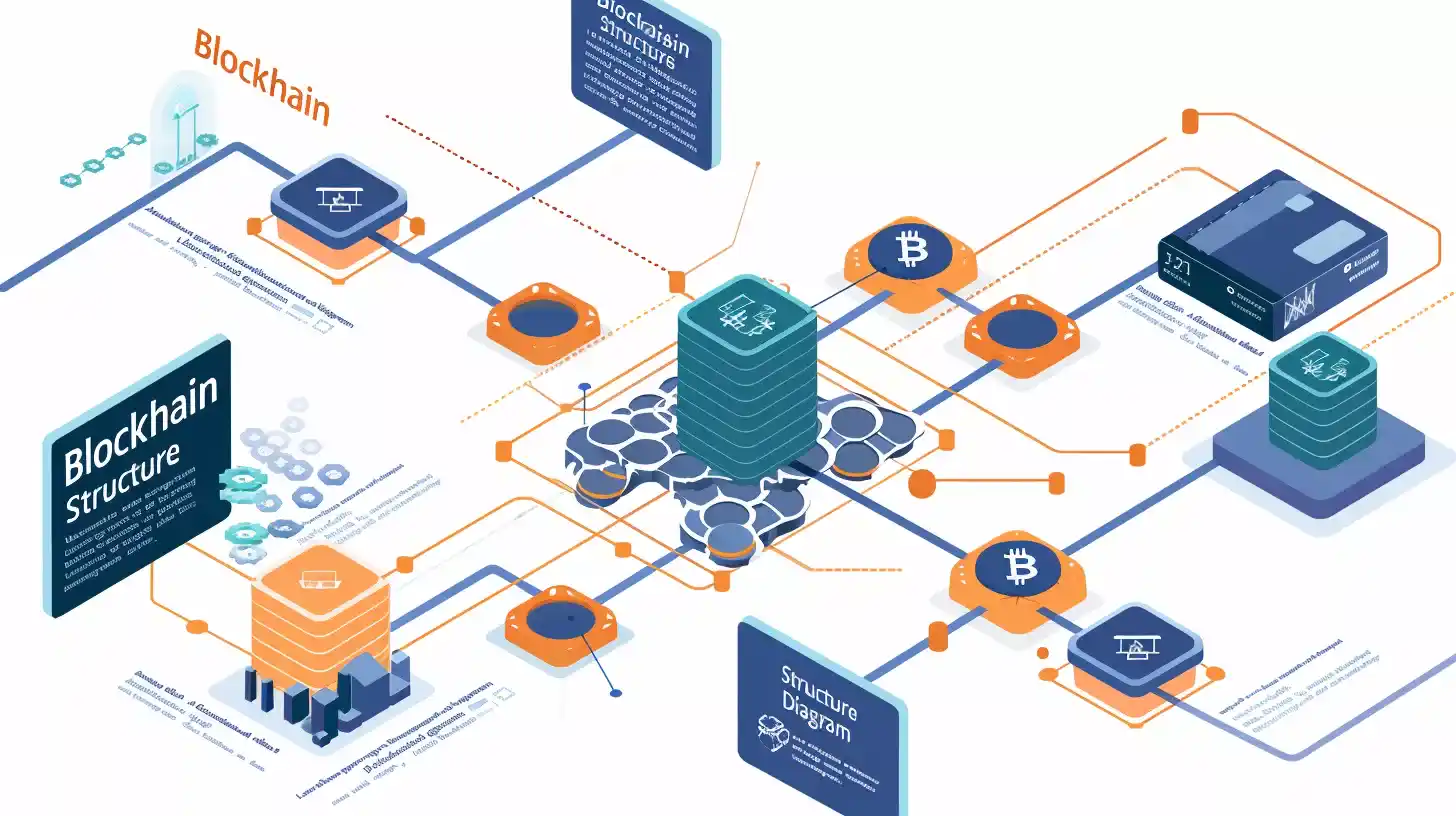Table of Contents
Introduction
In the digital age, the term ‘blockchain’ is often surrounded by a whirlwind of hype and mystique. At its core, blockchain is a transformative technology that promises to revolutionize how we transact and trust. What is it exactly, and why is it important? This article peels back the layers of complexity to provide a clear, comprehensive understanding of blockchain technology, covering over 2000 words of explanation and exploration.
The Evolution of Blockchain: A Brief History
Blockchain’s journey began with the creation of Bitcoin in 2009, but its roots can be traced back to research and development efforts in cryptography and computer science over the preceding decades. From a niche concept to a buzzword in tech circles, blockchain has come a long way. Let’s explore its evolution and how it’s shaping our future.
Understanding Blockchain
What is Blockchain?
Imagine a ledger that’s not just held by one person or organization but is distributed across a network, transparent and tamper-proof. That’s blockchain. It’s a digital ledger technology where transactions are recorded in ‘blocks’ and linked together in a ‘chain.’ This structure creates an irreversible timeline of data when implemented in a decentralized nature. Additionally, blockchain intelligence enhances this system by analyzing vast amounts of blockchain data, providing insights that can improve security, compliance, and operational efficiency.
The Anatomy of a Block
Each block contains a collection of data, the hash of the block (a unique digital fingerprint), and the hash of the previous block, creating a link. The data in a block can vary from transaction details in a cryptocurrency to votes in an election, making it versatile for various applications.

How Blocks Are Chained
The magic of blockchain lies in how these blocks are chained together. When a block’s data is entered, it’s sealed with its unique hash. If the data is altered, the hash changes—signaling a breach in the chain. This mechanism ensures a high level of security in blockchain.
How Blockchain Works
- The Process of Adding Transactions: When a transaction occurs, it’s broadcasted to a network of computers, known as nodes. These nodes validate the transaction using known algorithms—a process that can involve solving complex mathematical problems in the case of cryptocurrencies.
- Verification and Consensus Mechanisms: Once a transaction is verified, it’s combined with other transactions to create a new block. This block is then added to the existing blockchain, but only after a consensus is reached among the nodes. This consensus mechanism ensures that each copy of the distributed ledger is the same, maintaining the integrity of the blockchain.
- Decentralization in Action: Decentralization is the heart of blockchain. Unlike traditional systems where a central authority has control, blockchain distributes control across the network. This not only enhances security but also democratizes data and trust.
Blockchain Technology Use Cases
Cryptocurrencies:
Bitcoin, the first and most well-known cryptocurrency, is blockchain’s first successful application. It demonstrated how money could be securely and anonymously transferred without the need for a central authority. Similarly, Litecoin has gained popularity as a faster alternative to Bitcoin, and converting LTC to USD has become increasingly convenient through various online platforms and some of the Best Cryptocurrency Wallets, allowing users to easily manage their digital assets.
Beyond Bitcoin:
Today, blockchain’s potential extends far beyond cryptocurrencies. It’s being explored for supply chain management, voting systems, healthcare records, and even intellectual property rights, showcasing its versatility. For instance, understanding the Bitcoin kurssi that discusses bitcoin rate can provide valuable insights into the broader economic implications of blockchain technology.
Blockchain for Social Good:
Blockchain also holds promise for social impact, such as in humanitarian aid, where it can ensure transparency and traceability of funds, or in renewable energy, where it can facilitate peer-to-peer energy trading.

Some real-world examples of Blockchain Technology
- Money Transfer: Blockchain enables faster and more secure money transfers, often with lower fees compared to traditional banking systems. Companies like JPMorgan Chase have developed blockchain initiatives like Onyx for real-time settlement of interbank transactions.
- Smart Contracts: Smart Contracts are contracts written into code that automatically enforce and execute agreements. They are used in industries like real estate and legal services.
- Internet of Things (IoT): Blockchain can secure the vast amount of data generated by IoT devices, ensuring reliable and tamper-proof networks.
- Personal Identity Security: Blockchain provides a secure and unforgeable way of managing digital identities, which is crucial in the fight against identity theft and fraud.
- Healthcare: Patient records and medical data can be stored on blockchain networks, allowing for secure and immutable records that can be quickly accessed by authorized personnel.
- Logistics: Supply chain management is greatly enhanced by blockchain, as it provides real-time tracking of goods and verification of authenticity.
- Non-fungible Tokens (NFTs): These digital assets represent ownership or proof of authenticity of a unique item or piece of content, primarily used in digital art, collectibles, and gaming.
- Government: Blockchain Technology can streamline government operations, reduce corruption, and increase transparency by securely storing public records and facilitating voting systems.
Challenges and Misconceptions
- Debunking Common Blockchain Technology Myths: There are many myths surrounding blockchain, such as it being only for cryptocurrencies or that it’s inherently unbreakable. This section will dispel these myths and present a balanced view of blockchain’s capabilities and limitations.
- Security Concerns and Solutions: While blockchain technology is more secure than traditional record-keeping systems, it’s not immune to attacks. We’ll explore the security concerns associated with blockchain and the measures taken to mitigate them.
- The Scalability Debate: Blockchain’s scalability is a hot topic. Can it handle the vast number of transactions required by global systems? We’ll delve into the debate and examine potential solutions.

The Future of Blockchain
Emerging Trends in Blockchain Technology
As blockchain matures, new trends are emerging, such as the integration of artificial intelligence and the rise of decentralized finance (DeFi). These developments are setting the stage for the next wave of innovation.
Blockchain’s Potential Impact on Various Industries
Blockchain is poised to disrupt industries far and wide—from finance to law, and beyond. We’ll investigate how blockchain technology could change the landscape of various sectors.
Preparing for a Blockchain-Driven Future
The blockchain revolution is just beginning. This section will provide insights on how individuals and businesses can prepare for a future shaped by blockchain technology:
- Individuals: Stay informed about the evolving landscape of blockchain applications. Explore possible job prospects in this expanding industry. Consider how blockchain technology can empower you in areas like identity management, secure data storage, and participation in decentralized marketplaces.
- Businesses: Identify potential use cases for blockchain technology within your industry. Evaluate the impact of blockchain on your existing processes and explore opportunities for innovation. Invest in pilot projects to test the feasibility of blockchain integration. Build expertise within your workforce to navigate the technical aspects of blockchain.
Conclusion
Blockchain is more than just a technology; it’s a new way of thinking about trust and transactions. This article has demystified the core aspects of blockchain, from its basic structure to its potential to reshape industries. We’ve covered the following key points:
- Blockchain is a decentralized system that securely and transparently records transactions using distributed ledger technology.
- Blockchain relies on cryptography and a network of computers to ensure data integrity.
- Decentralization is a core principle of blockchain, eliminating the need for a central authority.
- Blockchain has diverse applications beyond cryptocurrencies, impacting supply chain management, voting systems, and more.
- While challenges like scalability exist, blockchain holds immense potential for the future.
The Road Ahead for Blockchain Technology
As we stand on the brink of a blockchain-driven era, it’s clear that this technology holds immense promise. The road ahead is paved with challenges, but the potential rewards are vast. Blockchain is not just a technological evolution; it’s a cultural and economic revolution that will reshape the way we interact with data, conduct transactions, and establish trust in a digital world.
FAQs
What is blockchain in simple terms?
Imagine a shared spreadsheet that’s constantly being updated and can’t be tampered with. That’s essentially blockchain. It’s a secure way to record information and transactions across a network of computers.
How does blockchain ensure security?
Blockchain utilizes cryptography to form an unchangeable ledger. Every block is connected to the one before it, making any data tampering easily noticeable. Moreover, the decentralized structure of blockchain removes the possibility of a sole weak spot.
Can blockchain be used beyond financial transactions?
Definitely! Blockchain technology can transform numerous sectors. It can be applied for safe data storage, managing supply chains, enhancing voting systems, protecting intellectual property rights, and more.
What are the limitations of blockchain?
Blockchain technology currently faces the challenge of scalability. Handling a high number of transactions can be time-consuming and costly. Moreover, the technology is relatively new, and its legal and regulatory frameworks are still developing.
How can individuals prepare for the blockchain revolution?
Stay curious and learn about blockchain! Explore online resources, attend workshops, and engage with the blockchain community. Consider how this technology could impact your career path and explore potential opportunities in this growing field.